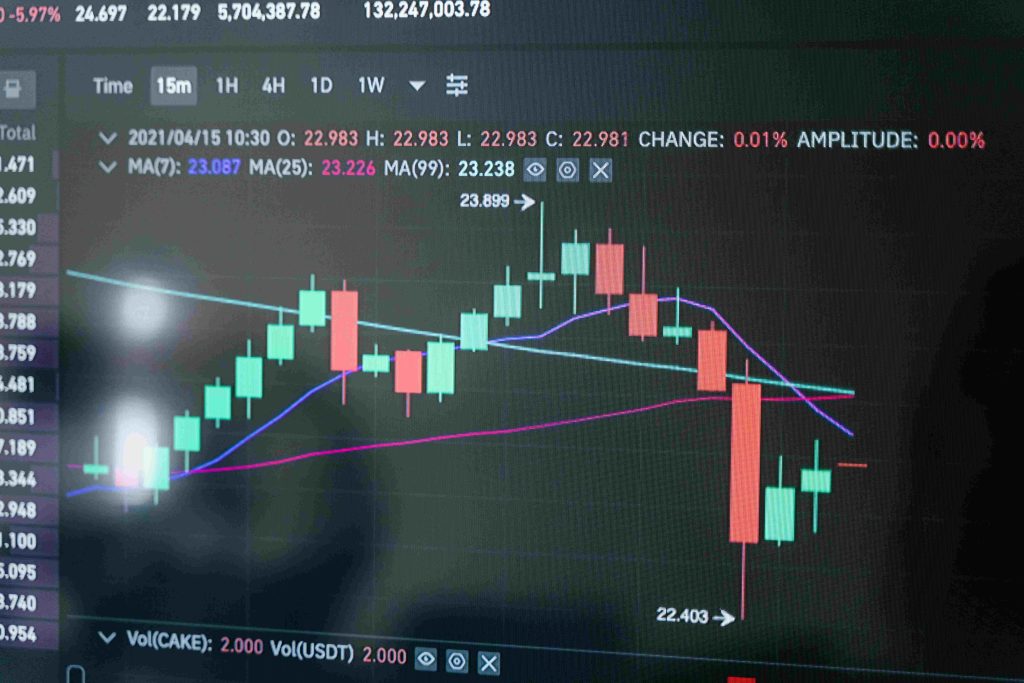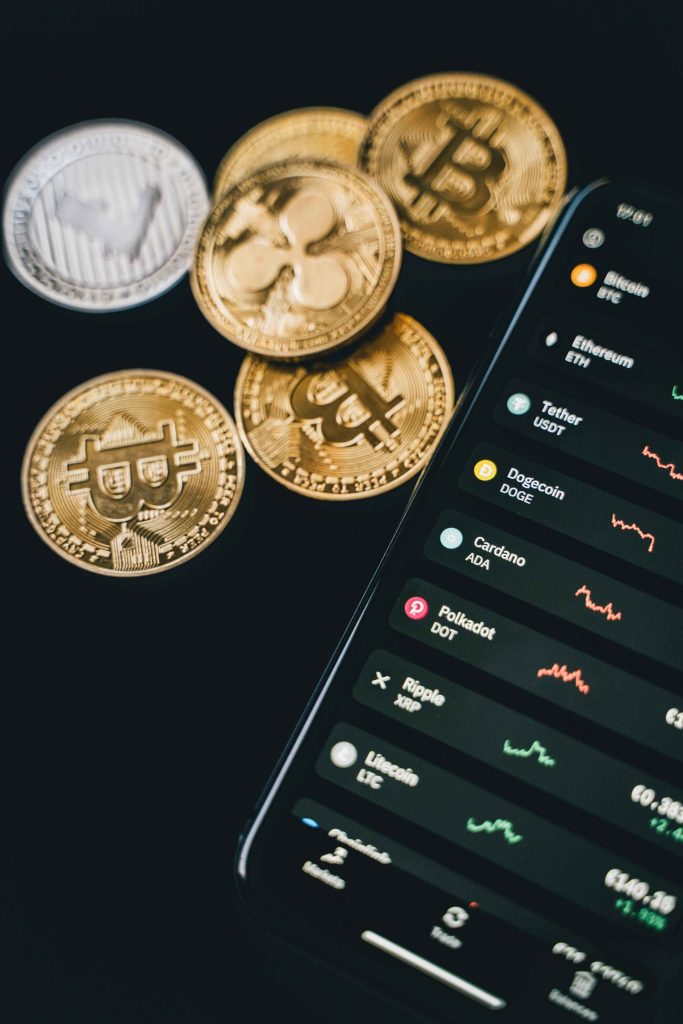Decentralized Finance, or DeFi, is changing cryptocurrency. It offers a new way to manage money, bypassing traditional banks. DeFi crypto trading gives people control over their transactions, without relying on banks or governments. It uses blockchain technology for transparency, security, and independence. For example, platforms like Compound and MakerDAO let users earn interest and lend money without middlemen.
DeFi has the potential to change finance. It could make it more flexible and accessible. Below, you will learn what DeFi is, how it works, and a few simple DeFi crypto trading and investing DeFi trading strategies that will help you navigate this ever-growing field.
What is DeFi?

DeFi is a short form of Decentralized Finance. Unlike traditional finance which relies on banks and financial institutions, decentralized finance trends use blockchain technology in order to create financial systems available to everyone. Some key features are the following:
Decentralization: There is no central authority controlling the transactions. Everything is managed by smart contracts—self-executing contracts with the terms written directly into lines of code.
Accessibility: DeFi crypto trading is accessible to anyone with an internet connection, thus making financial services available to people who would otherwise not have access to banking.
Interoperability: Many DeFi projects can interact with each other. You can lend and borrow on a separate platform, use different platforms for trading yet still none involving a system change.
Transparency: All transactions are recorded on a public blockchain, making verifying and auditing easier.
How Does DeFi Work?
DeFi crypto trading applications, or dApps, allow participants to participate in a variety of financial operations, including lending and borrowing, trading, and interest. Among the most widely-used DeFi services are listed below:
1. Lending and Borrowing
The main feature that DeFi platforms provide users with is the ability to lend their cryptocurrencies to another person in exchange for interest. On the other hand, users can borrow any cryptocurrency if they place enough collateral. Its popular services include Aave and Compound.
2. Decentralized Exchanges (DEX)
DEXs, such as Uniswap and SushiSwap, are unique in that every party directly trades with one another without an intermediary and uses smart contracts for processing purposes.
3. Yield Farming
It earns some rewards in the form of tokens and is a type of liquidity provision. Users can actually supply some of their cryptocurrencies to earn interest or tokens in return from a liquidity pool. It’s profitable but comes with risk.
4. Stablecoins
These are cryptocurrencies pegged to some stable asset, such as the US dollar. They are useful for trading and lending as they reduce the price volatility. A few examples include USDC, DAI, and others.

Risks Involved in DeFi
While the potential for high returns in DeFi crypto trading is tempting, it is crucial to understand the associated risks. Here are some common risks to consider:
Smart Contract Vulnerabilities: DeFi platforms rely on smart contracts, which can contain bugs or vulnerabilities that may be exploited by hackers.
Market Volatility: The crypto market is highly volatile, and significant price fluctuations can impact the value of your investments, especially in liquidity pools.
Impermanent Loss: When providing liquidity, you may experience impermanent loss if the value of the tokens you supplied changes significantly compared to holding the tokens outright.
Basic DeFi Trading Strategies
Now that you have some idea of DeFi crypto trading, let’s consider a few DeFi trading strategies you can use.
1. HODLing
HODLing is an easy strategy where one buys and holds cryptocurrency for the long term. The idea behind this is to invest in projects you believe in and wait for their value to increase. This requires patience and faith in the future of the project.
2. Dollar-Cost Averaging (DCA)
DCA is where you invest a certain amount of money at known intervals. This allows you to buy more when prices are low and less when they rise.
3. Swing trading
Swing DeFi crypto trading is a process of buying and selling cryptocoins over a short to medium time frame, days to weeks. It is often based on observing trends and the price movements as a way of making a profit. It does require some technical analysis as well as knowledge about the market trend.
4. Arbitrage
Arbitrage is the buying of a security in one market and selling of the same security in another at an effective price. It is an arbitrage strategy that uses price differences between markets. Thus, it requires speedy execution and good knowledge of transaction fees.
5. Staking
Many DeFi projects offer staking for their tokens. Token staking lets you lock up your tokens and earn an interest over time. This way you will be supporting the network’s security and functionality, while you receive the interest. Carefully research the project and its staking rewards.

High-Risk/ High-Reward Strategies
If you are more seasoned, here’s a high-risk, high-reward strategy or two. They require a higher knowledge level, which will come with higher risks.
1. Yield Farming
As mentioned above, yield farming allows you to earn rewards by providing liquidity. However, you do well to choose wisely which liquidity pools to join as returns are very volatile.
2. Leverage Trading
Some platforms will allow trading with leverage; that is, it lets you borrow funds to magnify your position size. This can increase profit but also raises possible losses so use it wisely.
3. Options and Futures
These are leveraged financial products which allow you to bet on a future price for cryptocurrencies. Be careful of the complexity involved, however and only enter having totally understood how they work.
4. Governance Participation
Many DeFi projects are governed by the community as DAOs, which are decentralized autonomous organizations. Governance token holders are able to vote on proposals about what the future of the project will be. It’s almost a way to shape the platform and earn rewards.
How to Earn With DeFi
There are several base ways to generate money from DeFi crypto trading. Each is slightly different in terms of risk and potential reward, so users do need to study them beforehand.
Lending
Lending is probably one of the easiest ways to make money through DeFi: by lending your crypto assets to others, earning interest on one’s holdings. Compared to centralized platforms like BlockFi-which may charge limits and keep yielding low interest rates, many times-DeFi lending platforms often offer much higher yields.
Higher Yields: DeFi lending platforms provide interest rates that could range from 30% to over 100% APY, depending on the asset and the platform.
Control Over Funds: With DeFi, you now have complete control over your assets. There are no instances where you might not get your funds because somebody up there did not approve of it.
Collateralized Loans: DeFi loans are over-collateralized. Essentially, the borrowers need to deposit more value than they wish to borrow. This constrains them from defaulting because it places themselves at a risk of losing more money than they expect to lose if things go wrong.
Providing Liquidity
Another way to earn money in DeFi crypto trading is by being a source of liquidity for the DEXs. Here you are putting your assets into a shared pot from which the traders can draw to make their trades, and you get the balance of all the trading fees for those trades as a dividend.
Pool of Stablecoins: The most secure method is being a source of liquidity using stablecoins, and you then have a known quality that maintains its value within a foreseeable band, so that most of the dangers of price volatility are removed.
Asset Pools: You can also use pairs of highly correlated assets such as Ethereum and Bitcoin to give liquidity. This will bring you both fees but expose you to the market.
High-Risk Pools: If you’re ready to take on a little more risk, you can lend your pool to new tokens or particularly volatile ones, giving you returns far beyond 400% APY.

Incentives and Airdrops
Most DeFi crypto trading projects provide incentives to attract users to their sites. For example, they may reward their users for using the platforms or for participating in governance. Another form of incentive is through airdrops. Users can obtain tokens by interacting with a particular site before a certain date.
Reward Plans: Reward programs, such as those provided by Avalanche and other platforms, began issuing tokens based purely on using their services, which in the millions across platforms.
Airdrops: With airdrops, existing users of a platform earn rewards. For instance, the ENS token has experienced an airdrop in the past whereby one user transformed $250 to $17,000 after selling off the tokens at peak prices.
Conclusion
DeFi crypto trading is changing the financial space as it offers decentralized, open and transparent alternatives to banking. It will have exciting trading and investment options but the risks all this comes with are paramount.
Whatever your level of expertise, whether a complete newbie or someone with plenty of experience, methods can be found to help you navigate through DeFi. To be informed, take caution, and invest only in what you could afford to lose – these are the first steps to better maneuver this fast-emerging field of DeFi, or so it can indeed bring the best sense of satisfaction.
Knowledge is the golden secret to a journey in DeFi crypto trading. Stay updated, learn, and enjoy traveling through decentralized finance trends.
You May Like: How to Analyze Cryptocurrency Market Trends
You May Also Like: The Best Time to Buy and Sell Cryptocurrencies

